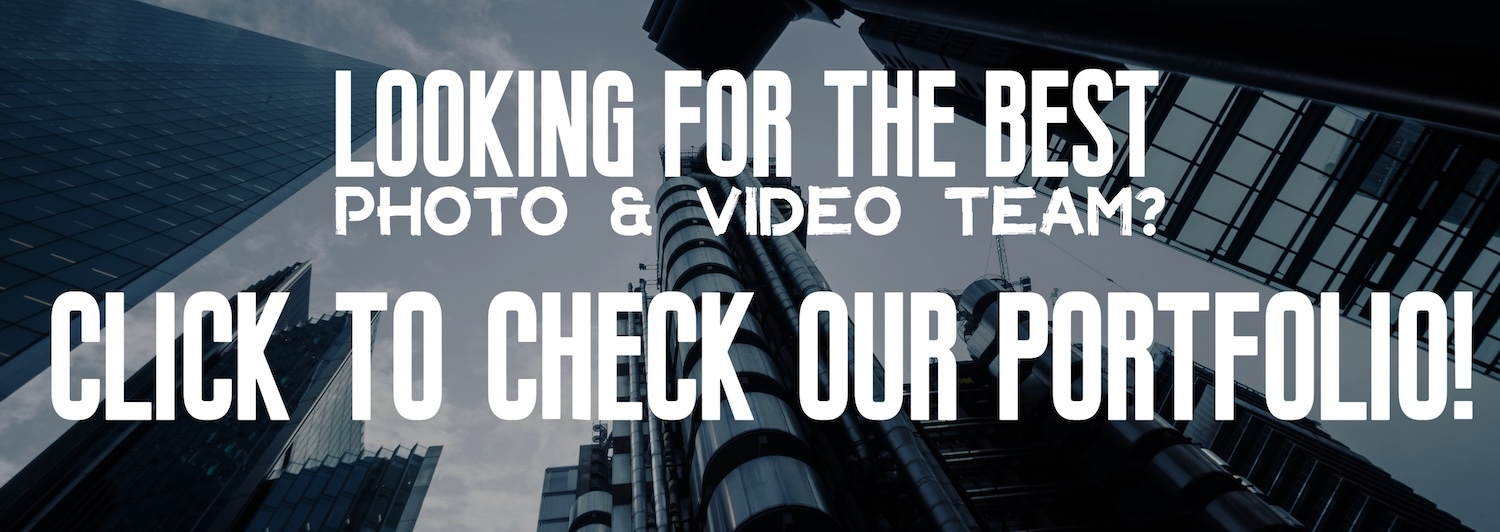The synergy of specialisation: Choosing a professional team for your video and photography needs
In today's fast-paced digital world, content is king. Whether it's for a red carpet, corporate event, or brand marketing, the demand for high-quality video and photography is higher than ever. While the allure of hiring a single individual who claims proficiency in both videography and photography is understandable, especially from a budgetary perspective, this approach often falls short of expectations. The nuanced artistry and technical expertise required to excel in both fields simultaneously are rare. Herein lies the value of turning to a professional team dedicated to fulfilling all your creative desires with unparalleled skill and vision. If you need a marketing videographer - you can always contact us as well! Order We Stream services to elevate your brand!
WANT TO DISCUSS A PROJECT? GET IN TOUCH!
The distinct crafts of videography and photography
At first glance, videography and photography might seem interchangeable - after all, both involve capturing images. However, the similarity ends there. Videography is the art of storytelling through motion, requiring an understanding of pacing, audio, and continuous shooting techniques to weave a narrative that captures the essence of a moment or message. Photography, by contrast, is the art of capturing stillness, a split second in time that conveys a story, emotion, or brand identity with depth and precision. Each discipline demands a unique set of skills, an eye for detail, and a deep understanding of the medium's respective language.
The essential gear for videographers vs. photographers
Video professionals:
- Camera: A cornerstone of any videographer's kit is the camera, but not just any camera. Videographers often lean towards models designed for extended shooting, with features that support high-definition video, robust autofocus during movement, and superior low-light performance. Mirrorless and cinema cameras are popular choices, offering a blend of portability, image quality, and versatility.
- Lenses: The choice of lenses is crucial for videographers, with a range often spanning from wide-angle to telephoto to capture varied shot compositions. Prime lenses with wide apertures are favored for their sharpness and low-light capabilities, while zoom lenses offer flexibility in framing without changing the position.
- Stabilization Tools: To achieve smooth, cinematic shots, videographers rely on an array of stabilization tools. Gimbals, steadicams, and shoulder rigs help counteract the shake and jitter associated with handheld shooting, essential for professional-looking footage.
- Audio Equipment: Audio quality is just as important as video quality. External microphones, such as shotgun mics for directional audio and lavalier mics for interviews, are staples. Audio recorders and headphones for monitoring sound ensure the final product is crisp and clear.
- Lighting: Continuous lighting solutions are key for videographers, from LED panels and softboxes to ring lights, ensuring consistent illumination across scenes.
Photographers:
- Camera: Photographers, like videographers, require high-quality cameras, but with a focus on still image performance. DSLR and mirrorless cameras dominate, prized for their high resolution, fast shooting speeds, and compatibility with a wide range of lenses. In our team you can find a range of famous celebrity photographers, who know how to get you to the best results.
- Lenses: Lens choice is paramount in photography, with prime lenses known for portrait work and macro lenses for close-up details. Wide-angle lenses capture landscapes and architecture, demonstrating the lens's role in defining the photograph's subject and mood.
- Flash and reflectors: Unlike the continuous lighting for video, photographers use flash units for a burst of light, crucial for controlling shadows and highlights. Reflectors bounce this light, softening or directing it for the desired effect.
While their primary tools diverge, videographers and photographers share some common ground in accessory gear:
- Memory cards: High-capacity, fast-writing memory cards are crucial for storing high-resolution photos and lengthy video footage.
- Batteries and power solutions: Extra batteries and portable chargers ensure that long shooting days don't end prematurely.
- Post-production software: Both professions rely heavily on software for editing, with videographers turning to programs like Adobe Premiere and Davinci Resolve, and photographers to Adobe Lightroom and Photoshop.
The power of collaboration
Opting for a team of professionals means benefiting from a collective of specialized talents, each bringing their depth of expertise, creative vision, and technical proficiency to the table. This collaboration results in a richer, more cohesive final product, whether it's for a healthcare video production that tells a story or a marketing campaign that needs both dynamic video content and striking imagery to stand out in a crowded digital landscape.
A professional team ensures that the quality of work remains consistently high across both mediums. In a scenario where one individual tries to juggle both tasks, there's an inevitable compromise—be it in the attention to detail, the creativity of the shots, or simply the energy and focus dedicated to each task. The synergy of a specialized team, however, amplifies the strengths of each medium, ensuring that the video brings to life the motion and emotion of the event while the photographs capture those irreplaceable moments in time with clarity and beauty.

The perfect pair: How video and photography are changing the game in modern media
Let's dive into how video and photography, those two peas in a pod, are shaking things up in today's media scene. Imagine them as the dynamic duo of storytelling, each bringing its own flavor to the table, yet together, they create something that's more than the sum of its parts. It's like having both salt and pepper in your culinary arsenal – individually great, but together, they elevate the dish to a whole new level.
Storytelling sidekicks
Think about it: videos are all about bringing stories to life, making you feel like you're right there in the action. They've got the power to pull you into a narrative, making your heart race or bringing a tear to your eye. On the flip side, photographs are the masters of the moment. They capture those blink-and-you'll-miss-it scenes, freezing them in time so you can ponder and admire every little detail. When you mix the two, you get a storytelling powerhouse that hits you with both the one-two punch of motion and emotion and the lasting impact of a still image that sticks with you.
REQUEST A QUOTE BY EMAIL
Keeping audiences hooked
In today's world, where our attention spans are shorter than a goldfish's, grabbing and keeping someone's attention is the name of the game. Videos are like the flashy magicians of the media world, drawing you in with their tricks and keeping you spellbound. Photos, however, are the silent poets, offering a pause in the hustle and bustle, inviting you to stop and smell the roses. Together, they create a rhythm in content that dances between action and reflection, keeping viewers on their toes and engaged.
SEO's best friends
When it comes to the behind-the-scenes hero of the internet – SEO – combining video and photography is like finding the secret sauce. Videos have a knack for making people stick around, telling search engines that there's something worth watching here. Photos, with their alt text and image tags, whisper sweet nothings to those same search engines, boosting your visibility. It's a win-win situation where everyone's invited to the party.
Tailored creativity and efficiency
A dedicated team also brings the advantage of tailored creativity and efficiency to the project. With clear roles and responsibilities, each member can focus on delivering their best work, allowing for a seamless workflow that saves time and reduces stress for the client. This specialization means photographers can scout the perfect shot or angle while videographers focus on capturing the event's flow, ensuring no moment is missed.
Moreover, a professional team is equipped to handle unexpected challenges—be it technical issues, changing lighting conditions, or tight schedules— with grace and professionalism. Their collective experience prepares them to adapt and innovate, ensuring that the project's integrity remains intact, regardless of the circumstances.
WANT TO DISCUSS A PROJECT? GET IN TOUCH!
Looking to the horizon
Peering into the crystal ball, the future of video and photography in media looks brighter than ever. With the lines between reality and digital blurring, thanks to tech wonders like AR and VR, the potential for storytelling is boundless. These two mediums will continue to evolve, pushing the boundaries of creativity and how we connect with content.
So, there you have it. Video and photography, together, are redefining modern media, creating a world where stories are not just told but felt and remembered. It's a dynamic landscape that's constantly changing, but one thing's for sure – this duo is here to stay, and I, for one, can't wait to see where they take us next. What about you? Any thoughts on how these two mediums have impacted your view of modern media?
